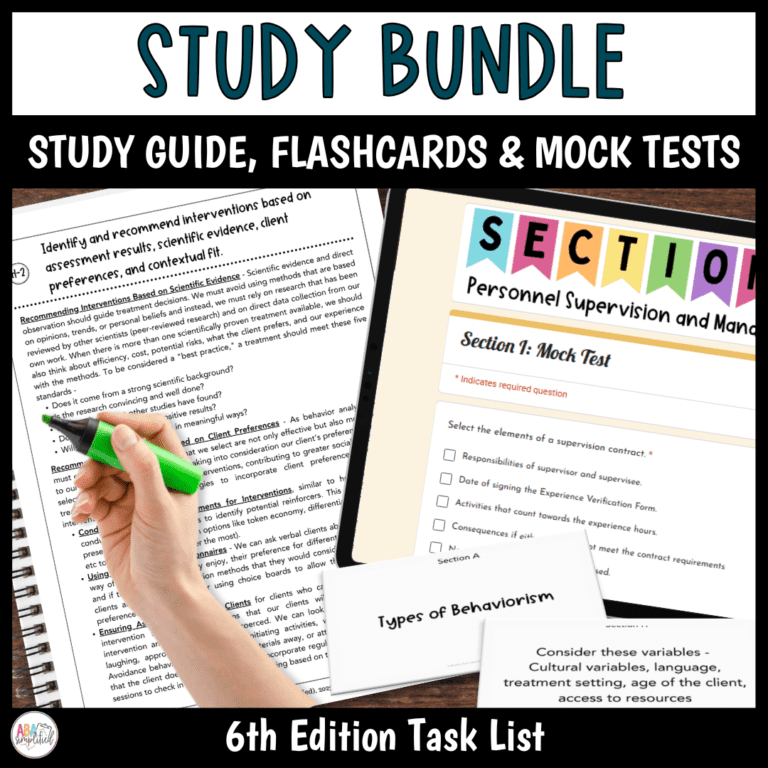BLOG POST
A-1 Goals of Behavior Analysis as a Science
Published on 14th April 2025 by ABA Simplified


Behavior analysis is more than just observing actions. It is a scientific approach to understanding and influencing behavior. In this post, we’ll explore the three goals of behavior analysis as a science: description, prediction, and control. By the end, you’ll understand how to apply these concepts and why they’re necessary for creating meaningful behavior change.
P.S. Looking for a structured breakdown of Section A? Check out my study guide which breaks down these concepts with definitions, examples, and flashcards!
Description
Description involves systematically observing and recording behavior without interpretation. It answers the question: What is happening? Description is intended to eliminate the guesswork. Before we can change behavior, we first need to understand its patterns and context.
Let’s look at an example where a BCBA has a parent collect some ABC data during bedtime struggles with their toddler. In this scenario, the parent tells their child that it’s time for bed (antecedent). The child immediately starts crying, screaming, and clinging when told it’s bedtime (behavior). The parent delays bedtime by 10 minutes (consequence). This data helps us understand the behavior’s context, which is the first step towards designing an effective intervention.
Prediction
Prediction means recognizing correlations between events. When X occurs, Y is likely to follow. Remember that correlation doesn’t imply causation.
Predicting behavior helps us to anticipate the behavior before it occurs and allows us to use proactive strategies instead of reactive strategies. Using the same example as before, let’s say after tracking ABC data for a week, the BCBA notices that in about 90% of instances, before the parent says it’s time for bed, the TV was switched off abruptly, without the child being given any warnings. This means that the tantrum probably isn’t about bedtime itself. It’s likely about the sudden transition from a preferred activity (TV) to a non-preferred one (bed).
Control
Control is the highest level of understanding, where we can demonstrate that changing an environmental variable (intervention) reliably changes behavior. Without control, interventions would be based on hope, not evidence. Behavior analysts rely on data to validate their strategies.
Following the same example as before, the behavior analyst has the parent give the child a 5 minute warning using a visual timer and says, “5 more minutes of TV, then bedtime!”. Data indicates that without the use of the timer, the behaviors (tantrums, clinging etc) lasted 10+ minutes every single night. After the intervention, tantrums were lasting 1 minute or less each night. With this, we’ve demonstrated a functional relationship. The addition of the timer (intervention or independent variable) reliably changed the tantrum behavior (dependent variable).
Want more study materials? Check out the BCBA Exam Prep Bundle, which helps you break down test content using simple language and master the materials. It includes study guides, printable flashcards, and 150+ mock exam questions to test your understanding!


Sign Up For Blog Updates!
Subscribe to stay in the loop with my latest blogs!
Thank you!
You have successfully joined our subscriber list.

